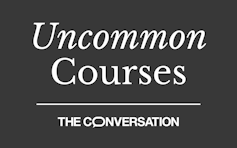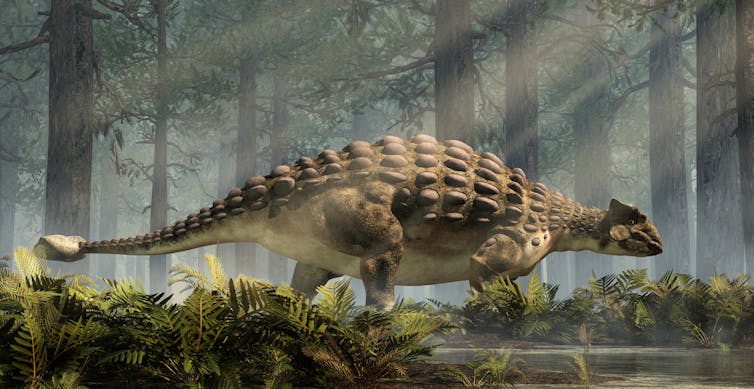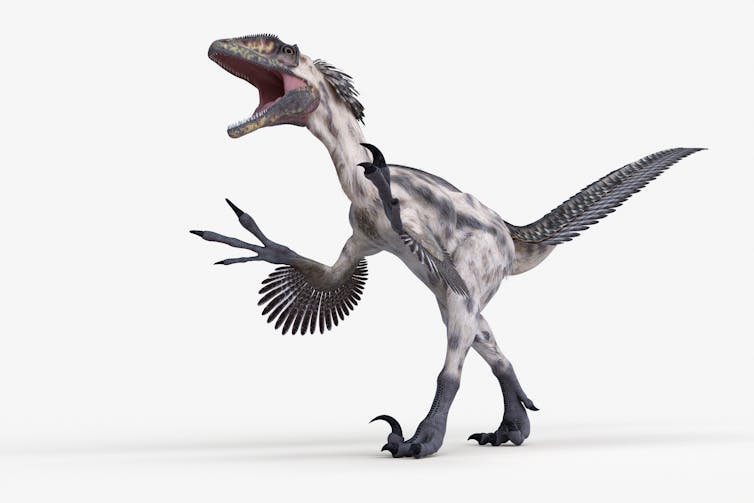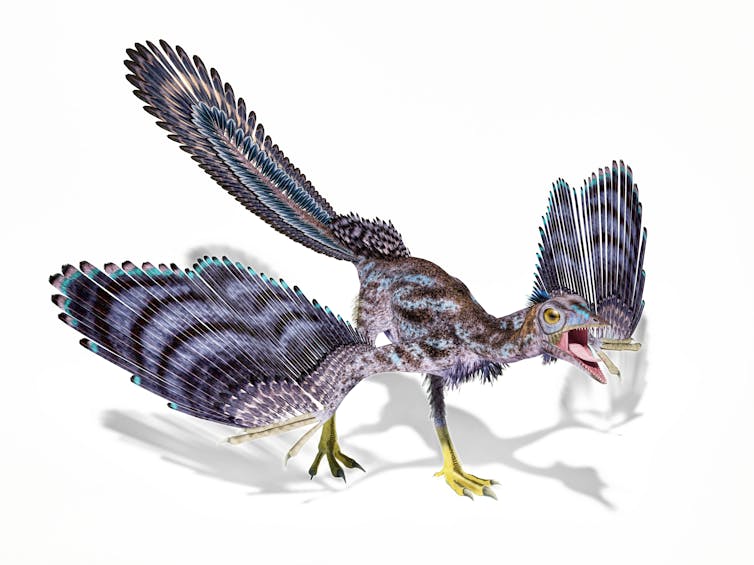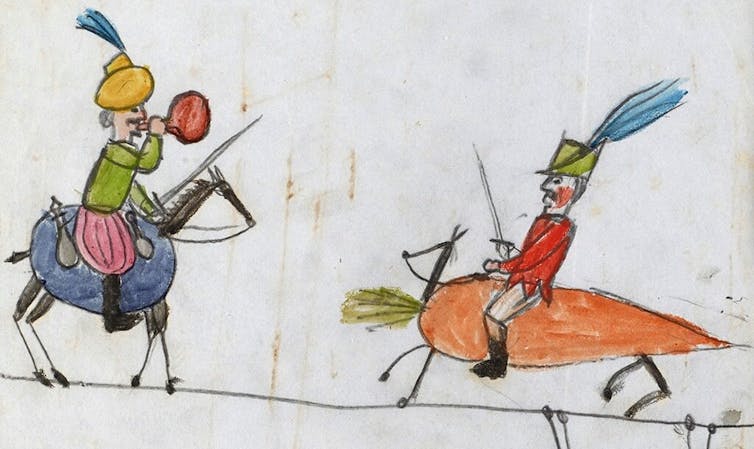Travis Gettys
August 16, 2024

Then-President Donald Trump hugs the flag at the annual Conservative Political Action Conference (CPAC) at Gaylord National Resort & Convention Center February 29, 2020 in National Harbor, Md. (Photo by Tasos Katopodis/Getty Images)
Donald Trump sparked an outcry from military veterans and many others by proclaiming that the civilian Presidential Medal of Freedom as "better" than the Medal of Honor for military valor.
The Republican presidential nominee praised Miriam Adelson, the widow of the late GOP megadonor Sheldon Adelson, during a speech Thursday evening at his New Jersey golf resort, where he recalled awarding her the civilian honor after the couple had poured millions of dollars into his first campaign.
“I watched Sheldon sitting so proud in the White House when we gave Miriam the Presidential Medal of Freedom," Trump said. "That’s the highest award you can get as a civilian, it’s the equivalent of the Congressional Medal of Honor."
The video player is currently playing an ad.
The Medal of Honor is the highest military honor bestowed for valor in combat, and it's often mistakenly called, as Trump did, the Congressional Medal of Honor.
"But civilian version, it’s actually much better because everyone [who] gets the Congressional Medal of Honor, they're soldiers," Trump continued. "They’re either in very bad shape because they’ve been hit so many times by bullets or they’re dead. She gets it, and she’s a healthy, beautiful woman, and they’re rated equal, but she got the Presidential Medal of Freedom, and she got it for — and that’s through committees and everything else.”
Trump had been feuding with Adelson, who introduced him at this speech, up into this week, when he reportedly ordered one of his aides to bombard the eighth-richest woman in the world with abusive texts accusing her of hiring insufficiently loyal Republicans at the super PAC she funds, but he met privately with her before the event.
The Republican presidential nominee has previously slurred service members killed in combat as "suckers" and "losers," according to reports, and questioned what anyone got out of serving their country in the military, and many observers found his remarks about the Medal of Honor just as offensive.
"General Kelly and Jeffrey Goldberg reported of Trump’s contempt for American heroes who sacrificed in war," said MSNBC's Joe Scarborough. "Here he denigrates their sacrifice again, saying civilian medals are better than war honors because its recipients aren’t 'hit so many times by bullets or dead.'"
"This submoronic s---heel gave the Medal of Freedom to Rush Limbaugh and Devin Nunes," added TV producer David Simon. "And because he's utterly ignorant, ahistorical and terrified to read anything longer than his own tweets, it's certain that he hasn't bothered to read the combat accounts of recipients of the Medal of Honor. To him, soldiers and sailors and Marines are 'suckers' and never asked the question on his mind: 'What was in it for them?' Those are his quotes. This is his mind. This man is unfit to be an American citizen, let alone govern."
"Trump [dishonors] Medal of Honor recipients, our nations highest military award for distinguished acts of valor," said Alexander Vindman, a former Army lieutenant colonel who testified in the first impeachment inquiry. "He deserves nothing but disdain and disqualifies himself from public office."
"Did not have 'denigrate Medal of Honor recipients' on my Trump’s Terrible Week bingo card, but here we are," saidUSA Today columnist Rex Huppke. "My god, this is beyond disrespectful."
"Trump just said the medal he gave to a rich donor is 'better' than the Medal of Honor," said Marine Corps veteran Amy McGrath, who ran for U.S. Senate in Kentucky. "This man really doesn’t have a clue."
One Trump supporter and Marine Corps veteran, Josiah Lippincott, tried to clean up the former president's remarks.
"As a Marine, I can say that Trump is exactly right about the Medal of Honor," Lippincott said. "Getting that award means that either you or your friends and comrades came back in body bags or f----- up for life. No one should want that award."
Dario DiBattista chimed in:
"Part of my first day as a combat replacement in Iraq, was the memorial ceremony for Cpl Jason Dunham. He leaped on a grenade to absorb its blast and save his fellow Marines. He made the Ultimate Sacrifice. Not even close to the same award Rush Limbaugh got. F all the way off."
August 16, 2024

Then-President Donald Trump hugs the flag at the annual Conservative Political Action Conference (CPAC) at Gaylord National Resort & Convention Center February 29, 2020 in National Harbor, Md. (Photo by Tasos Katopodis/Getty Images)
Donald Trump sparked an outcry from military veterans and many others by proclaiming that the civilian Presidential Medal of Freedom as "better" than the Medal of Honor for military valor.
The Republican presidential nominee praised Miriam Adelson, the widow of the late GOP megadonor Sheldon Adelson, during a speech Thursday evening at his New Jersey golf resort, where he recalled awarding her the civilian honor after the couple had poured millions of dollars into his first campaign.
“I watched Sheldon sitting so proud in the White House when we gave Miriam the Presidential Medal of Freedom," Trump said. "That’s the highest award you can get as a civilian, it’s the equivalent of the Congressional Medal of Honor."
The video player is currently playing an ad.
The Medal of Honor is the highest military honor bestowed for valor in combat, and it's often mistakenly called, as Trump did, the Congressional Medal of Honor.
"But civilian version, it’s actually much better because everyone [who] gets the Congressional Medal of Honor, they're soldiers," Trump continued. "They’re either in very bad shape because they’ve been hit so many times by bullets or they’re dead. She gets it, and she’s a healthy, beautiful woman, and they’re rated equal, but she got the Presidential Medal of Freedom, and she got it for — and that’s through committees and everything else.”
Trump had been feuding with Adelson, who introduced him at this speech, up into this week, when he reportedly ordered one of his aides to bombard the eighth-richest woman in the world with abusive texts accusing her of hiring insufficiently loyal Republicans at the super PAC she funds, but he met privately with her before the event.
The Republican presidential nominee has previously slurred service members killed in combat as "suckers" and "losers," according to reports, and questioned what anyone got out of serving their country in the military, and many observers found his remarks about the Medal of Honor just as offensive.
"General Kelly and Jeffrey Goldberg reported of Trump’s contempt for American heroes who sacrificed in war," said MSNBC's Joe Scarborough. "Here he denigrates their sacrifice again, saying civilian medals are better than war honors because its recipients aren’t 'hit so many times by bullets or dead.'"
"This submoronic s---heel gave the Medal of Freedom to Rush Limbaugh and Devin Nunes," added TV producer David Simon. "And because he's utterly ignorant, ahistorical and terrified to read anything longer than his own tweets, it's certain that he hasn't bothered to read the combat accounts of recipients of the Medal of Honor. To him, soldiers and sailors and Marines are 'suckers' and never asked the question on his mind: 'What was in it for them?' Those are his quotes. This is his mind. This man is unfit to be an American citizen, let alone govern."
"Trump [dishonors] Medal of Honor recipients, our nations highest military award for distinguished acts of valor," said Alexander Vindman, a former Army lieutenant colonel who testified in the first impeachment inquiry. "He deserves nothing but disdain and disqualifies himself from public office."
"Did not have 'denigrate Medal of Honor recipients' on my Trump’s Terrible Week bingo card, but here we are," saidUSA Today columnist Rex Huppke. "My god, this is beyond disrespectful."
"Trump just said the medal he gave to a rich donor is 'better' than the Medal of Honor," said Marine Corps veteran Amy McGrath, who ran for U.S. Senate in Kentucky. "This man really doesn’t have a clue."
One Trump supporter and Marine Corps veteran, Josiah Lippincott, tried to clean up the former president's remarks.
"As a Marine, I can say that Trump is exactly right about the Medal of Honor," Lippincott said. "Getting that award means that either you or your friends and comrades came back in body bags or f----- up for life. No one should want that award."
Dario DiBattista chimed in:
"Part of my first day as a combat replacement in Iraq, was the memorial ceremony for Cpl Jason Dunham. He leaped on a grenade to absorb its blast and save his fellow Marines. He made the Ultimate Sacrifice. Not even close to the same award Rush Limbaugh got. F all the way off."

